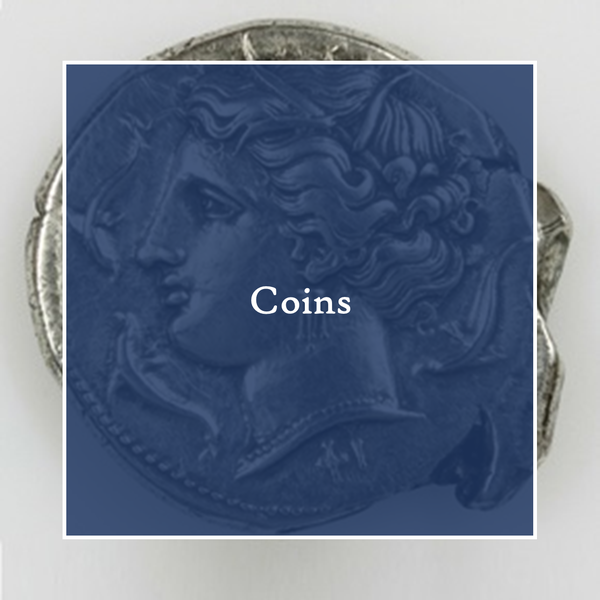Coins
|
Holdings and Their History The coin collection is one of the oldest components of the Collection of Classical Antiquities, with origins dating back to the early 18th century. When the eminent classical scholar Friedrich Gottlieb Welcker became professor of Greek Literature and Archaeology at the University of Giessen in 1809, a small collection of around 500 coins was already in existence. This collection was significantly expanded around the mid-19th century by Johann Valentin Adrian (1793-1864), the first director of the collection. Renamed "Kunst-, Münzen- und Antikenkabinett" (Cabinet of Art, Coins, and Antiquities) in 1835, the collection grew through extensive purchases from notable collections. Today, our collection comprises approximately 4,100 coins. It offers a broad spectrum that provides a comprehensive overview of ancient coinage, including coins from various Greek city-states and Magna Graecia, Hellenistic rulers, Roman emperors, and even coins from the Celts and Iberians.
Coins as Archaeological Objects Coins are a unique type of artifact that yield significant information. They not only reveal details about the ancient payment system, wage and property relations across different social classes, trade contacts, and trade routes but also convey insights through their imagery. The choice of designs on the obverse and reverse of coins has historically been used to express the self-image of the issuer and to convey ideological or cultural messages. The images on coins are diverse, featuring depictions of gods, heroes, and personifications, famous monuments, portraits of reigning rulers and their achievements, as well as political propaganda.
|
|

